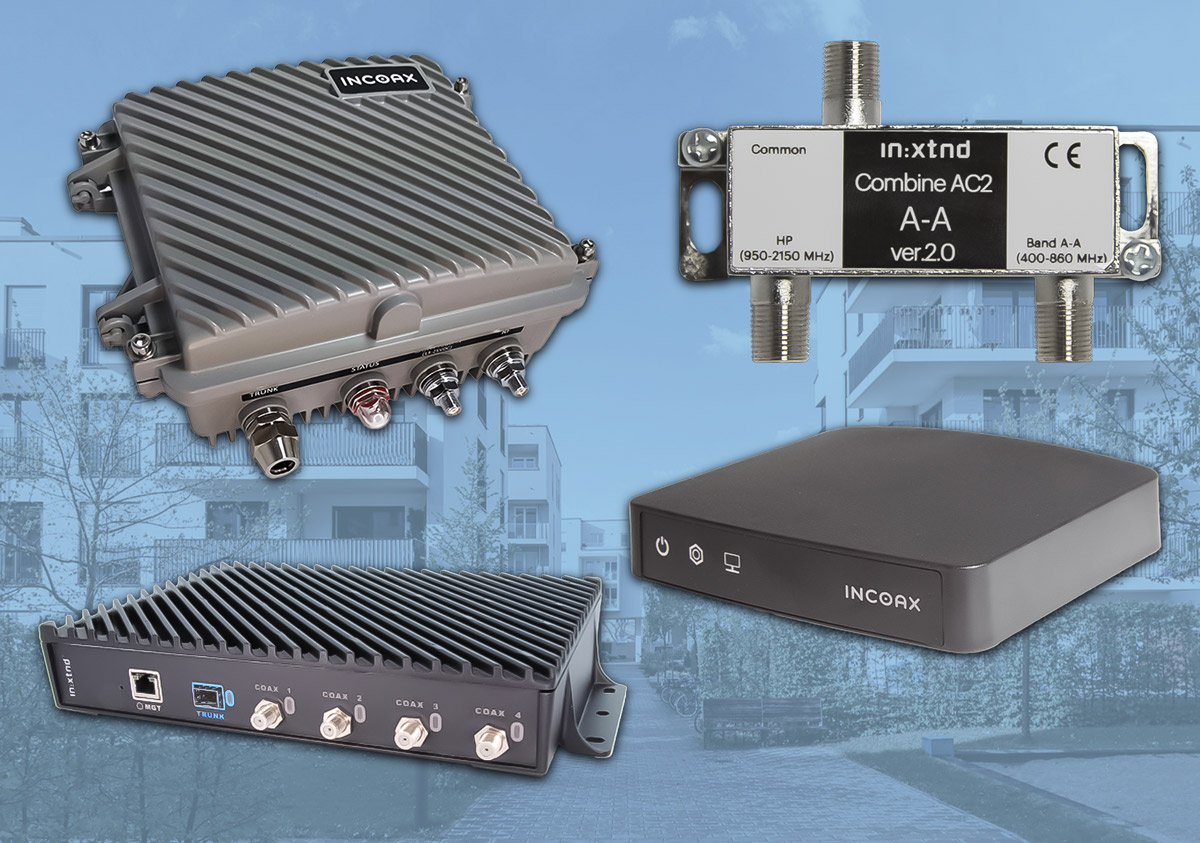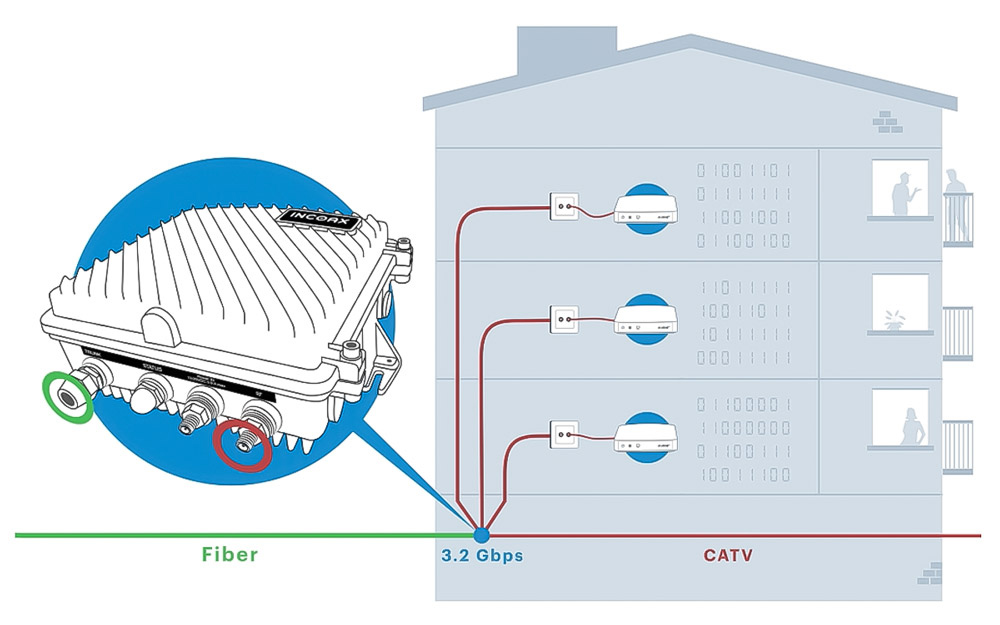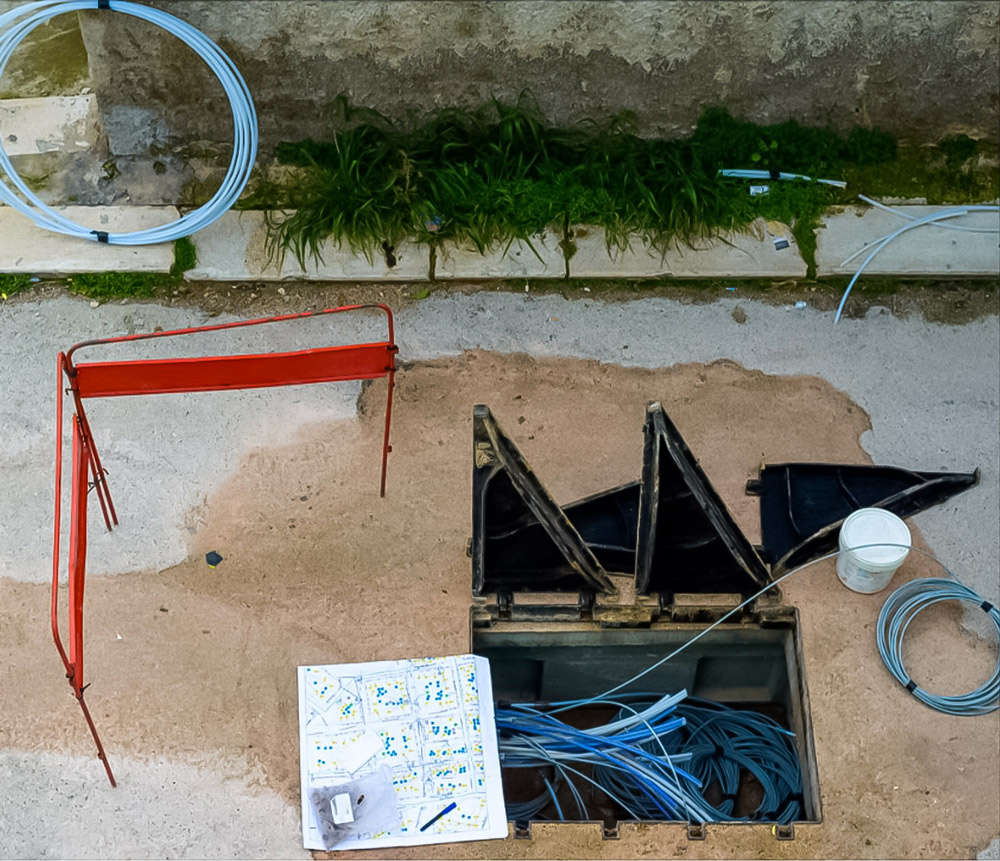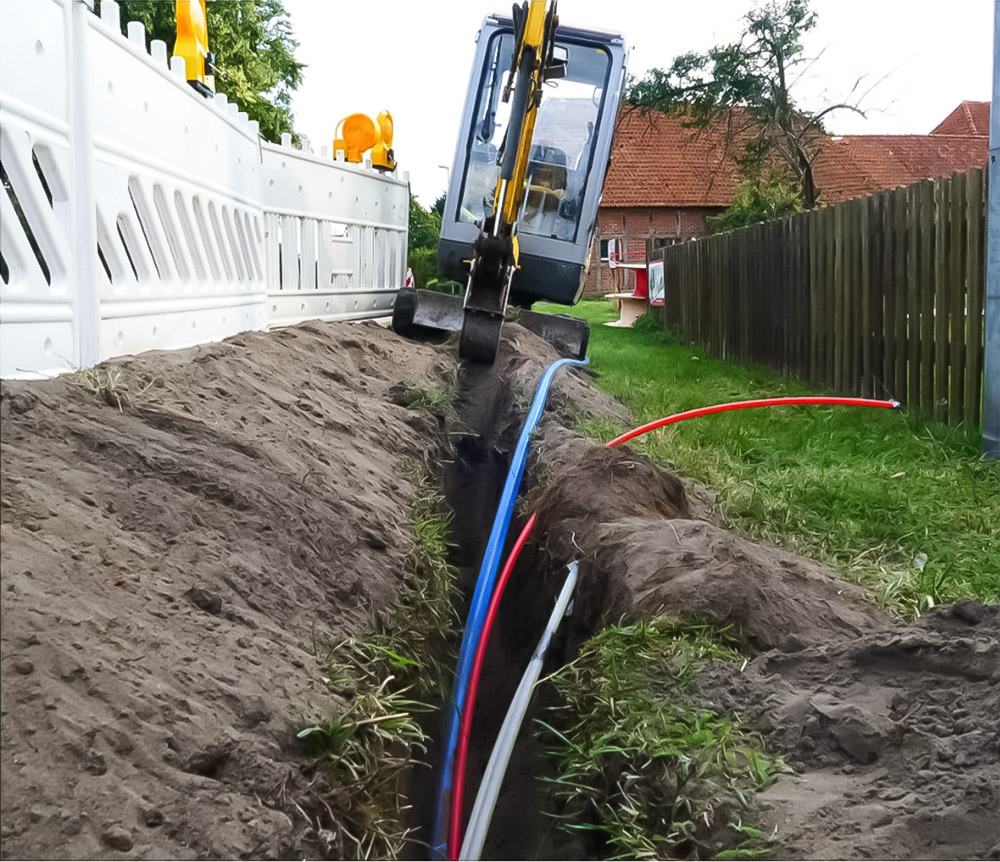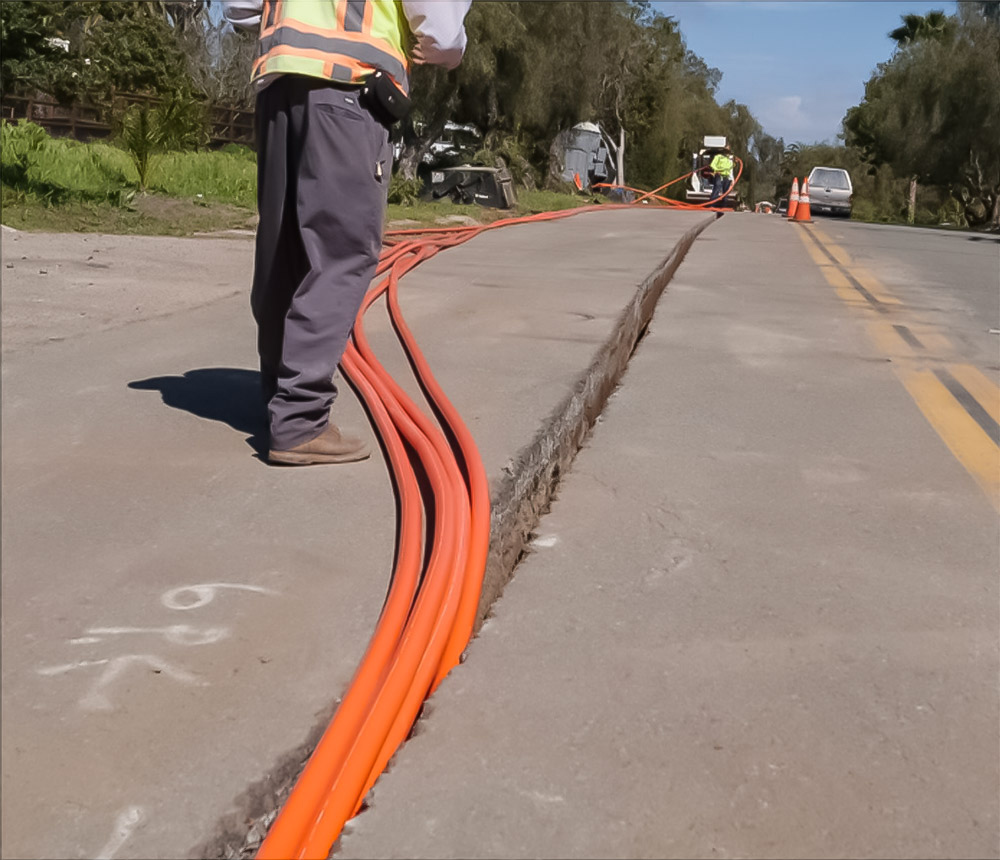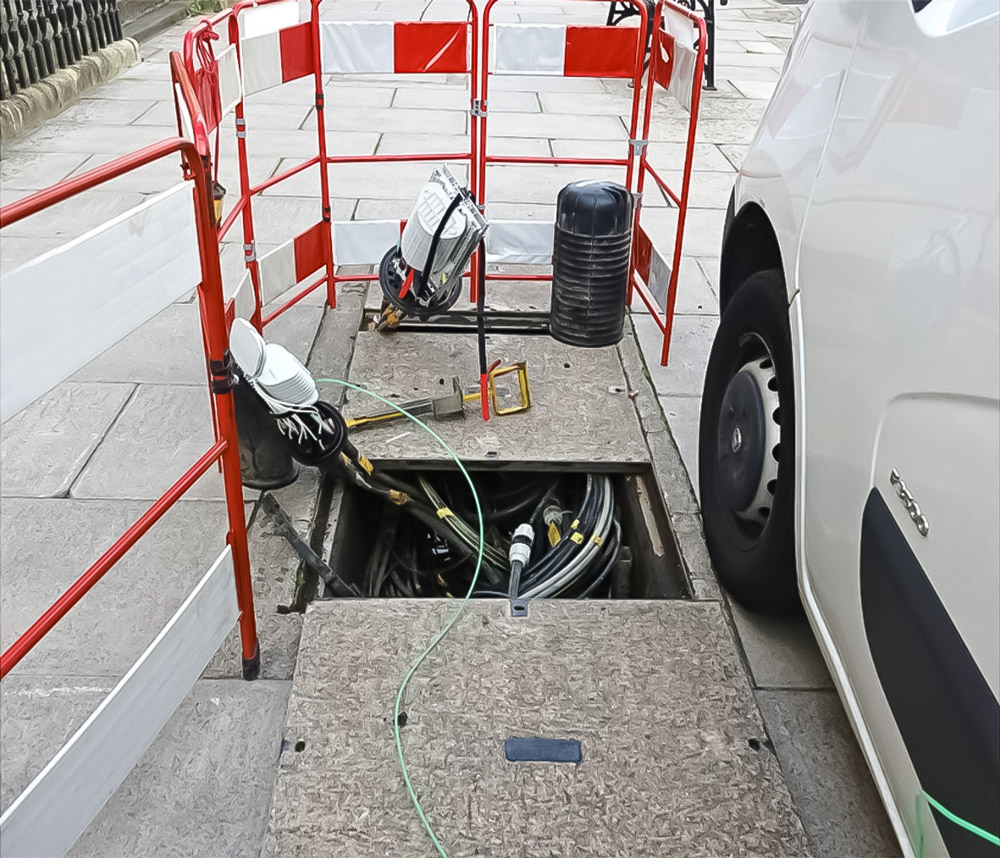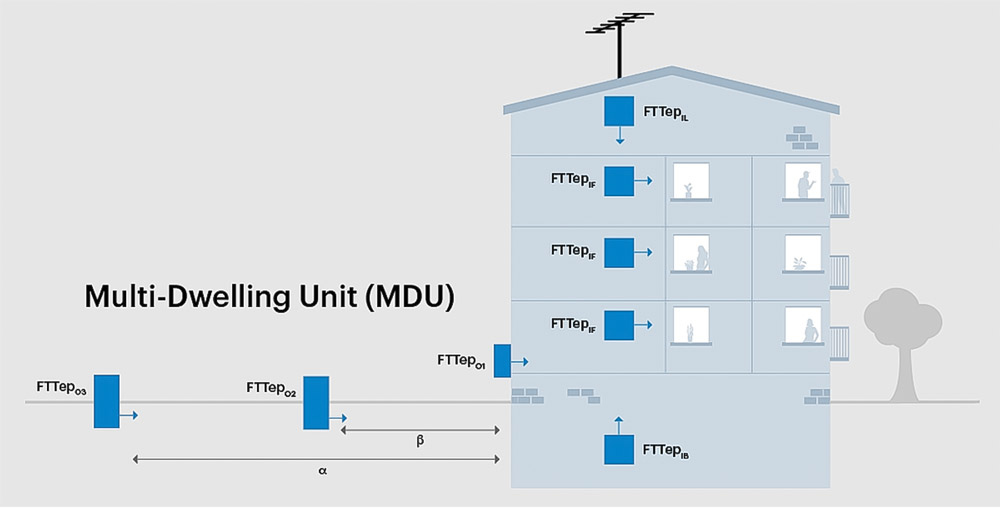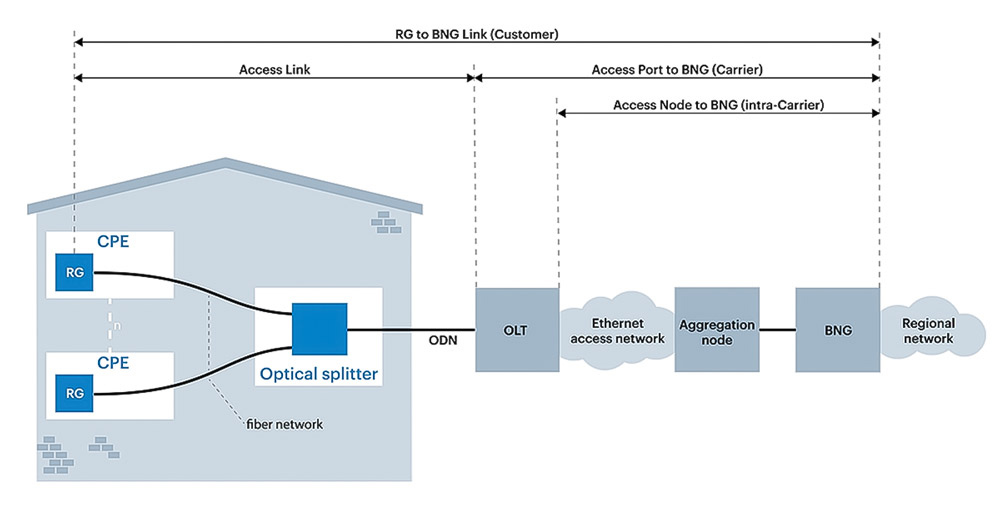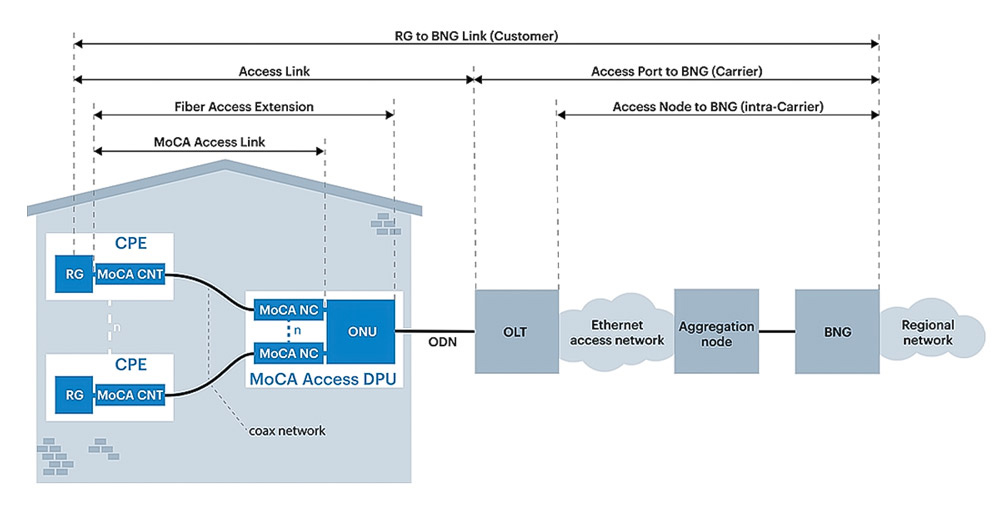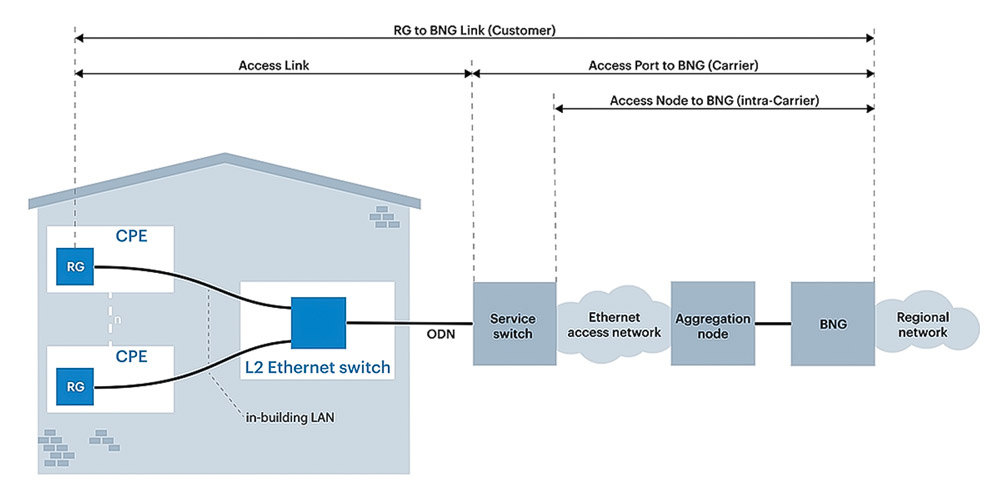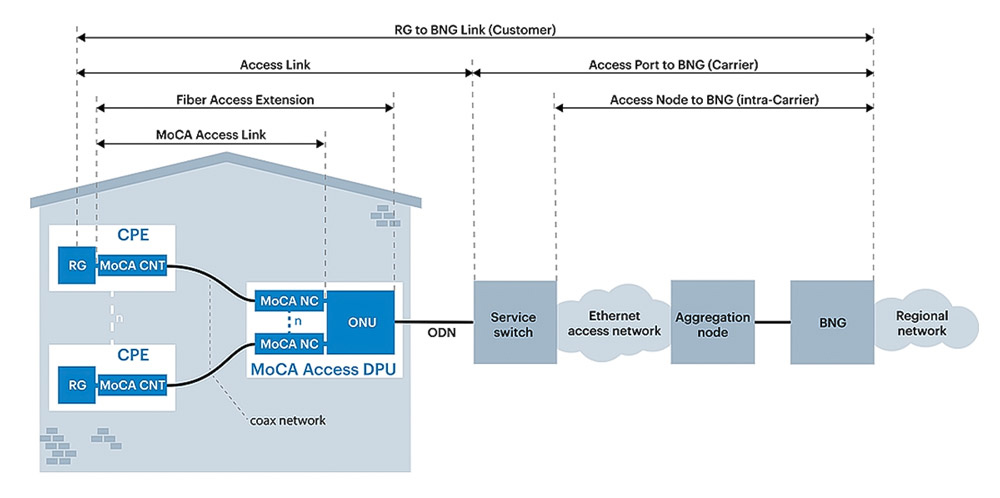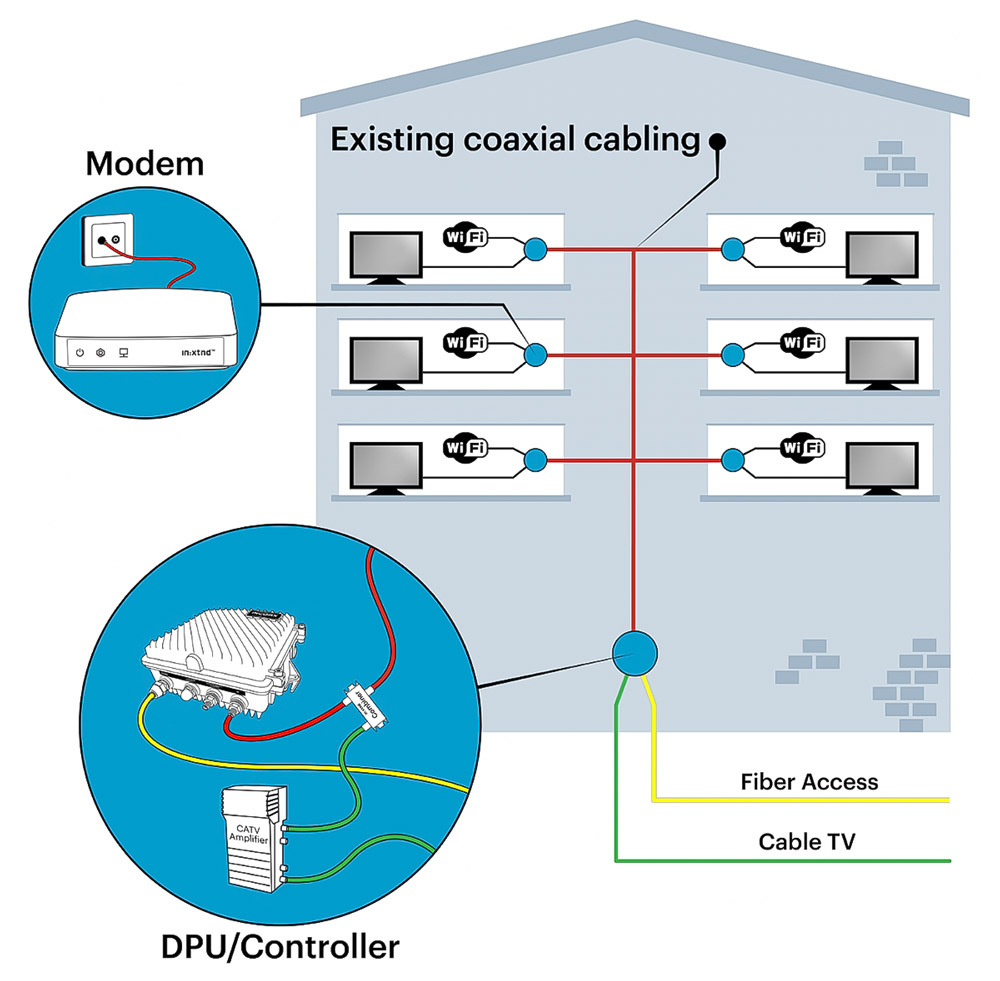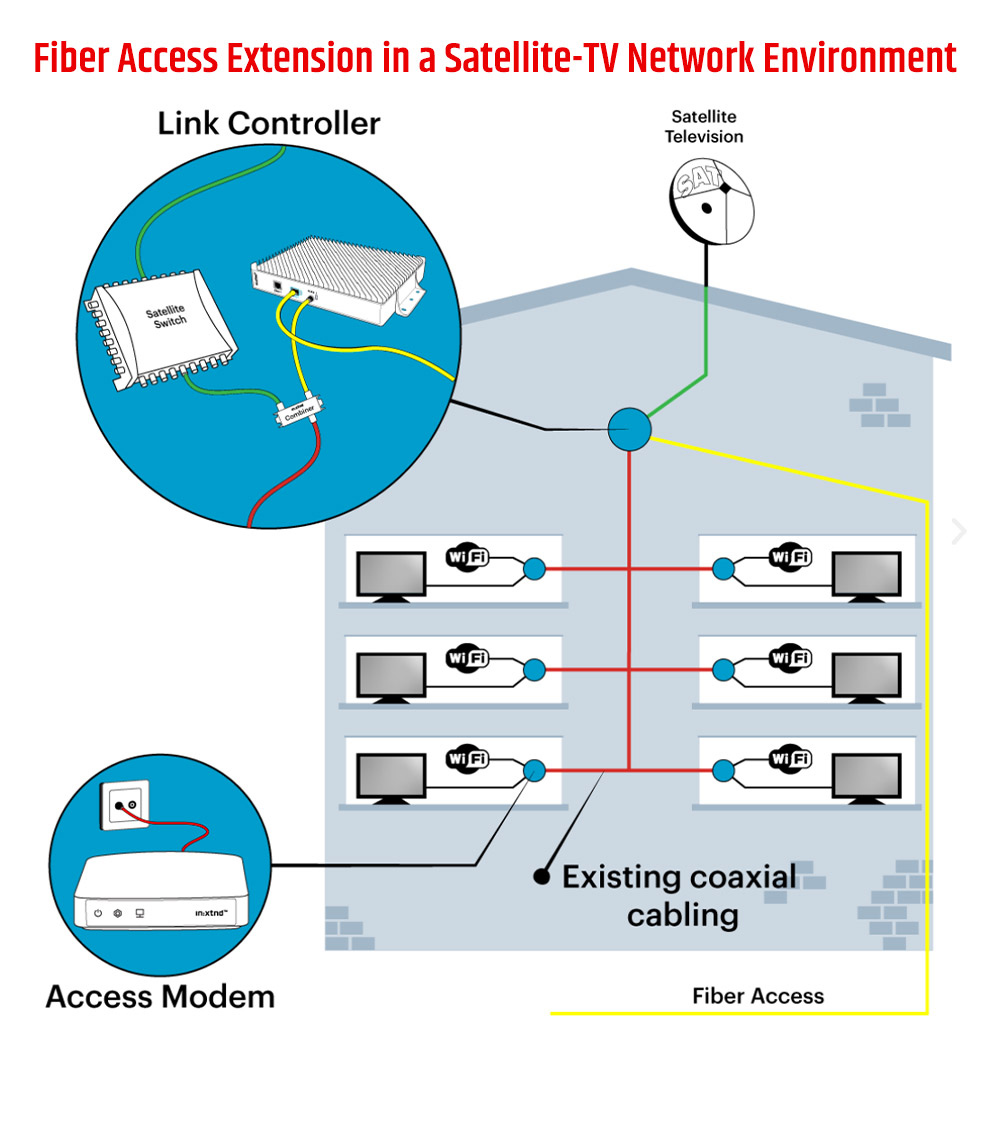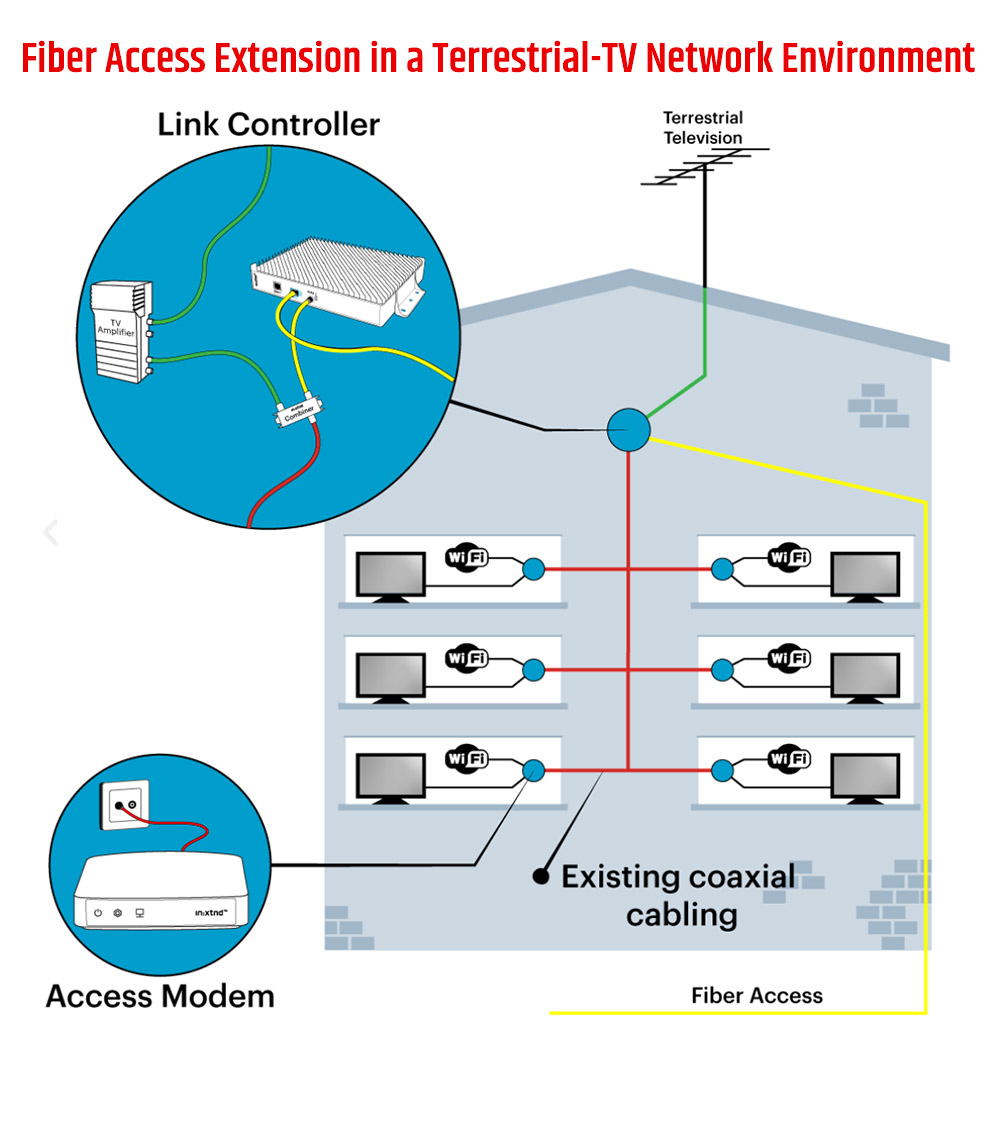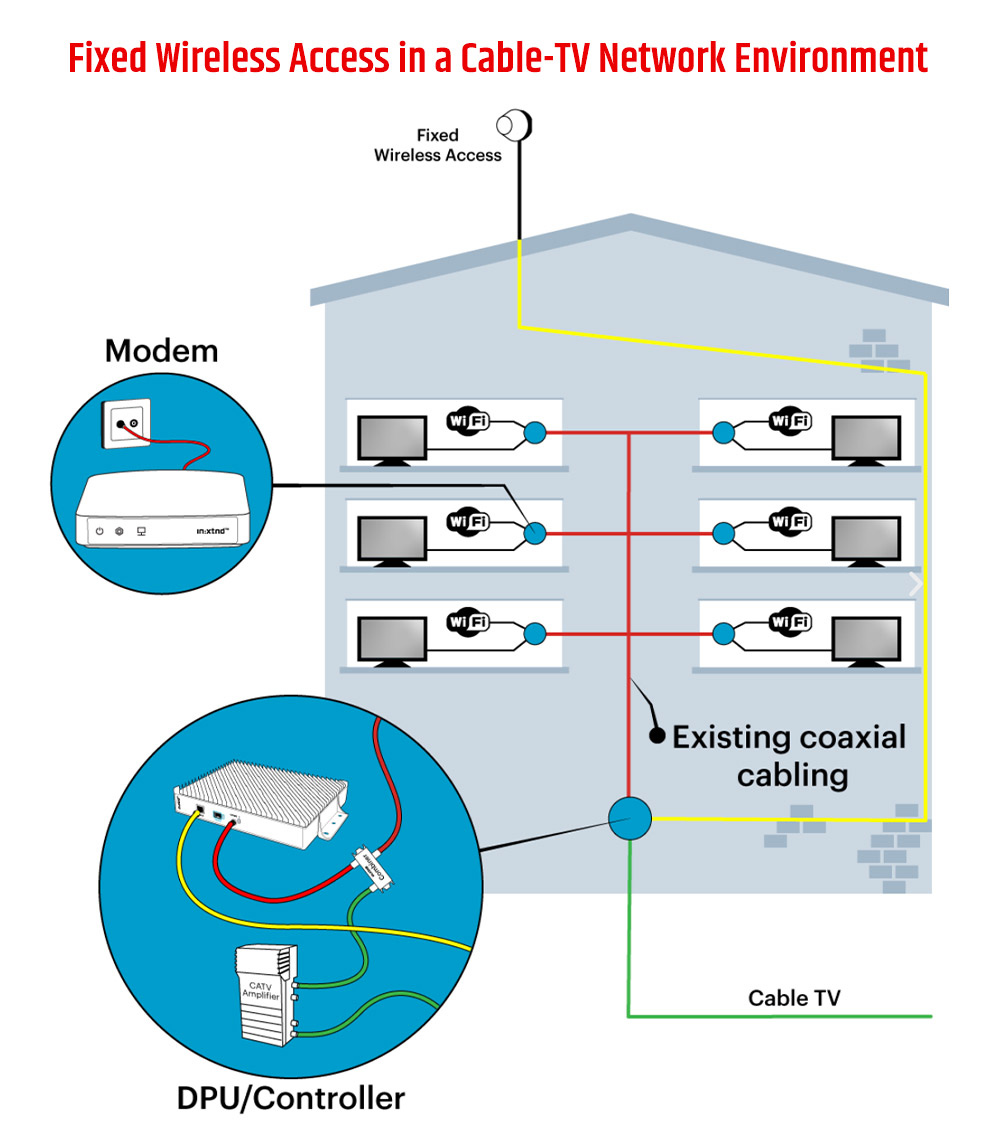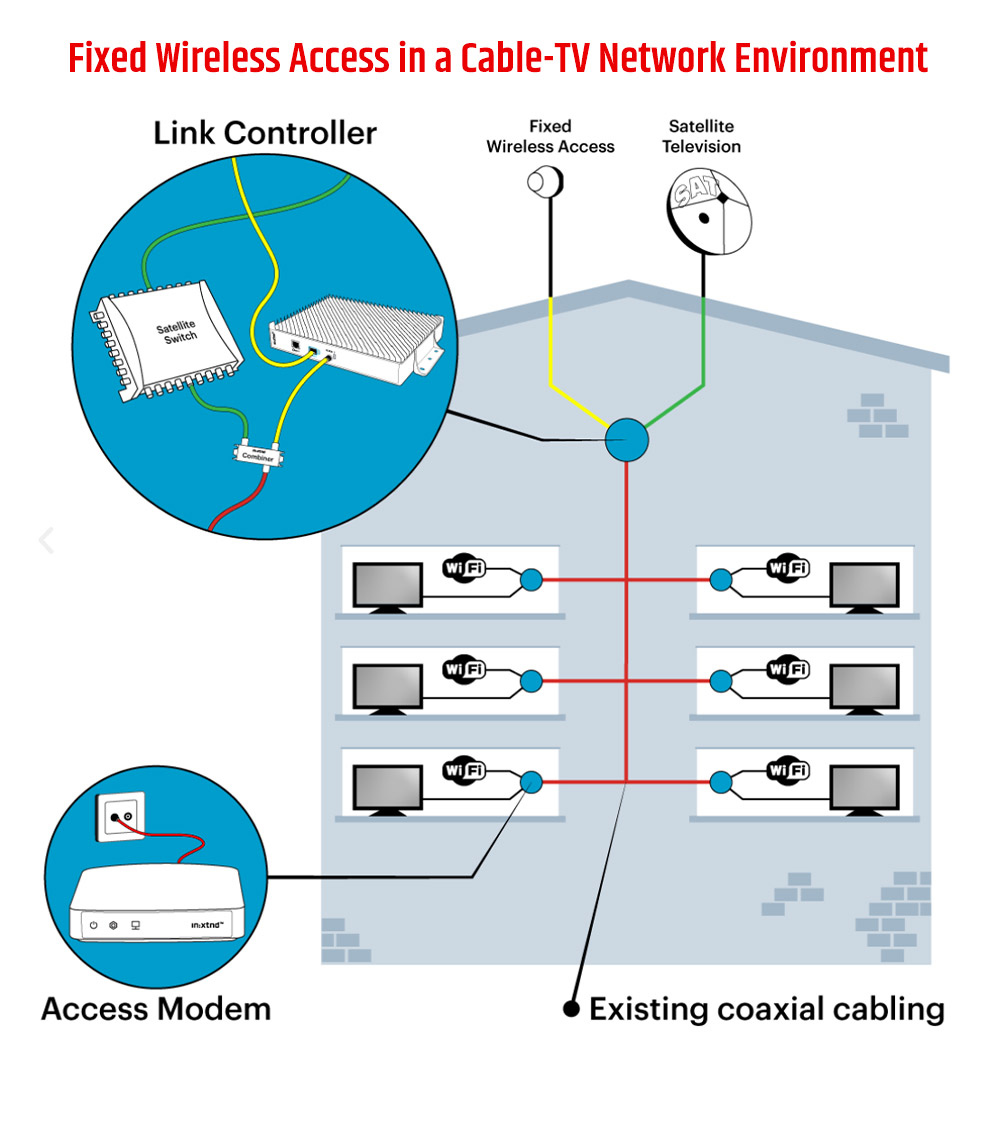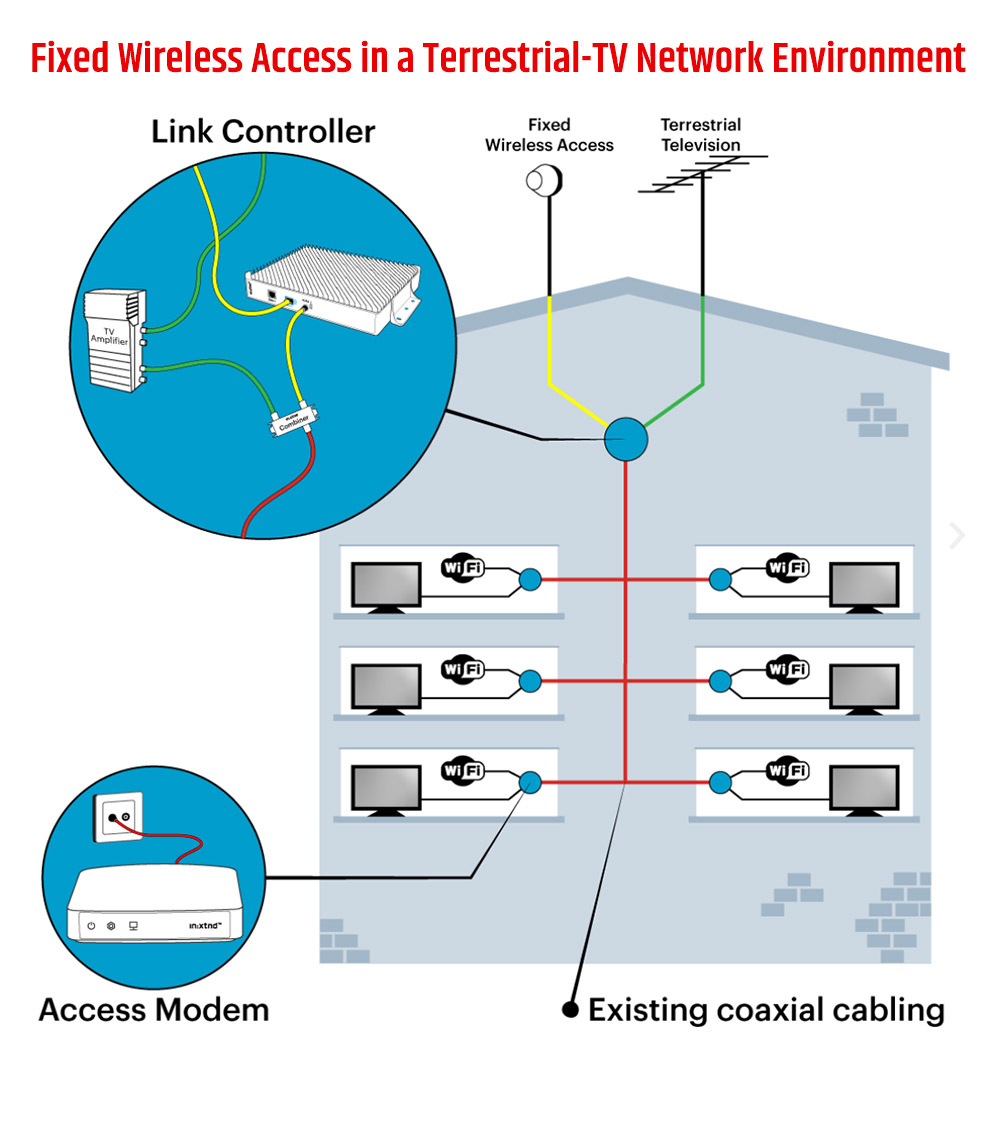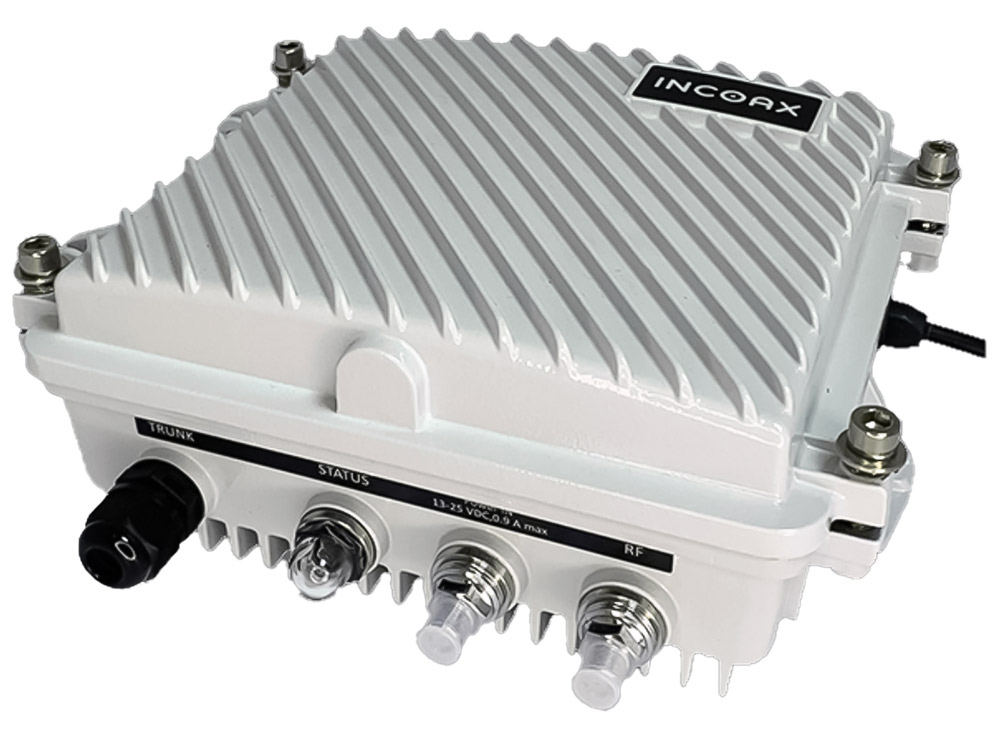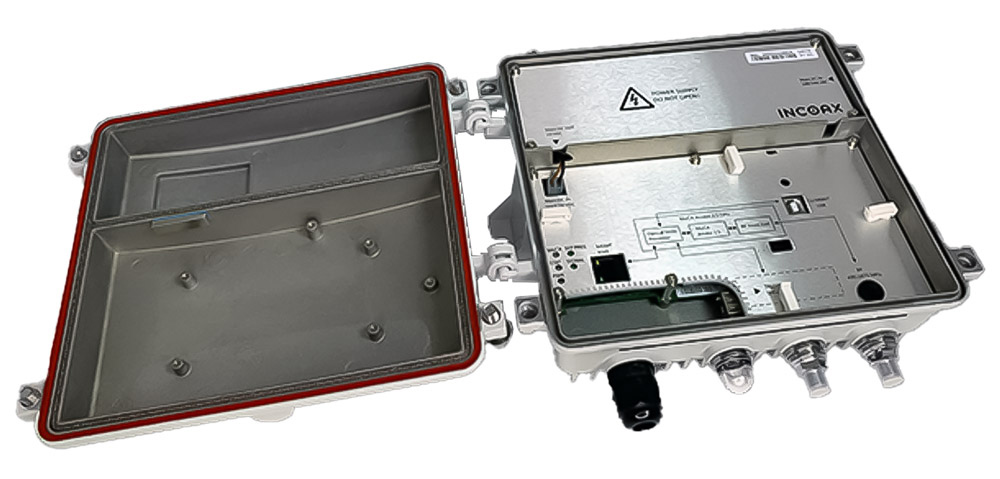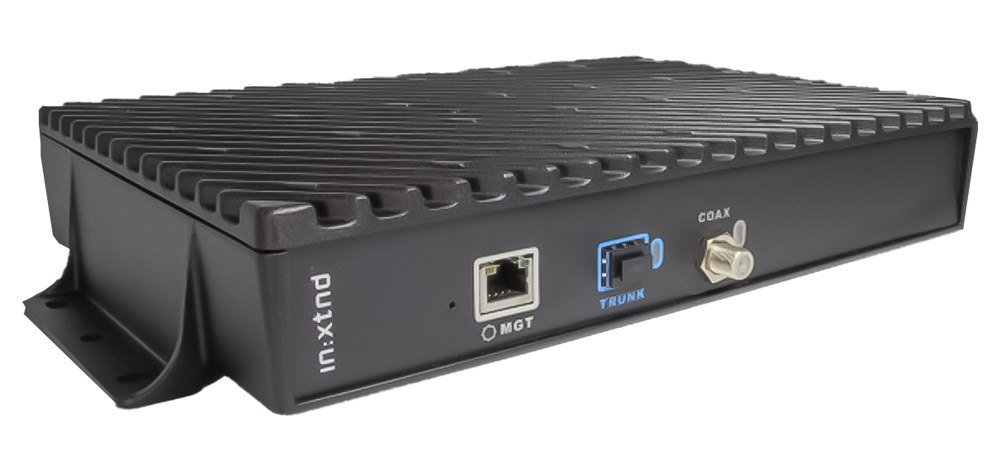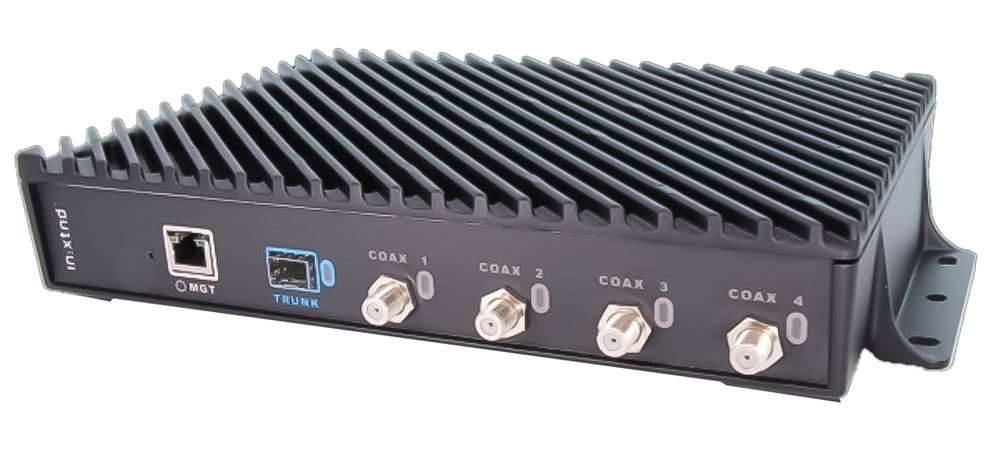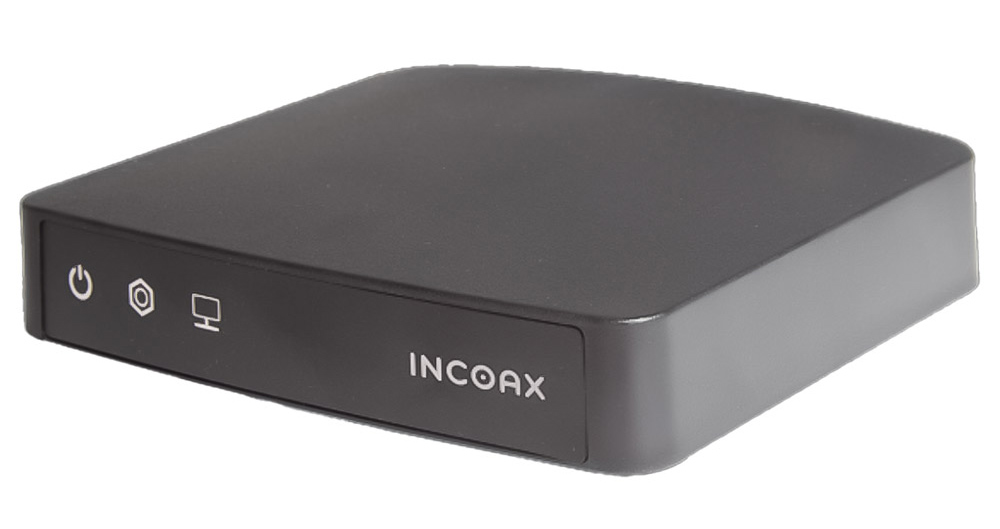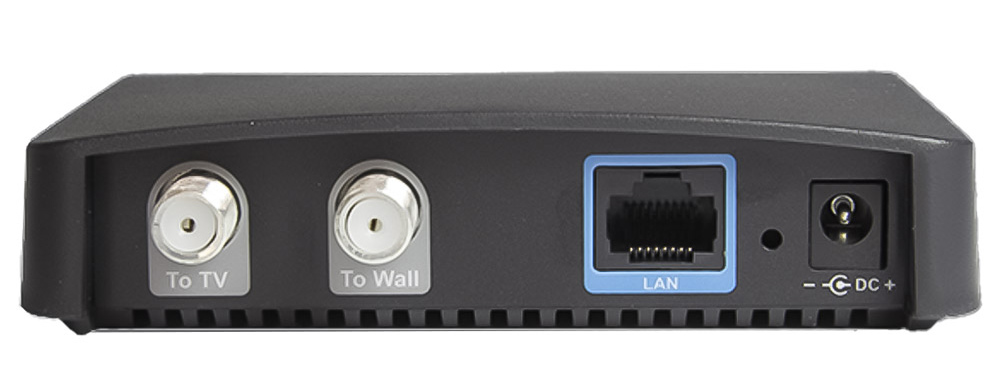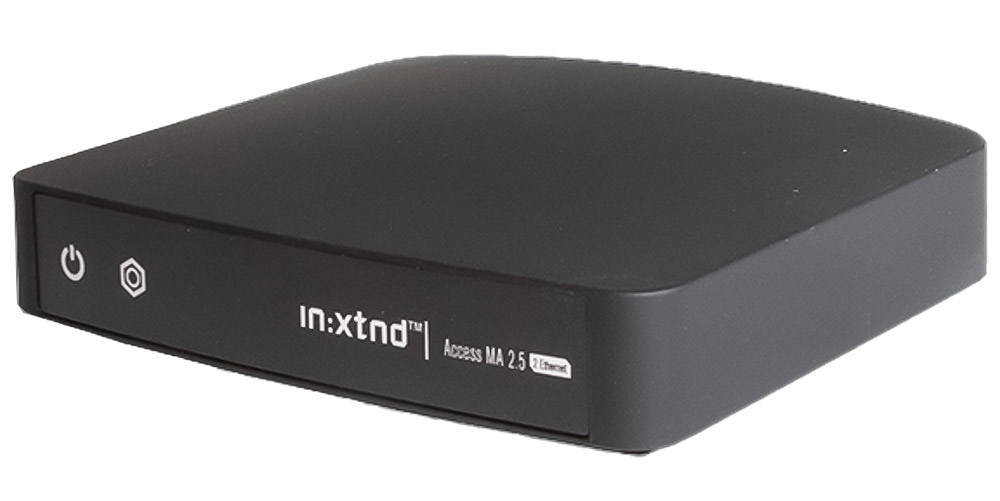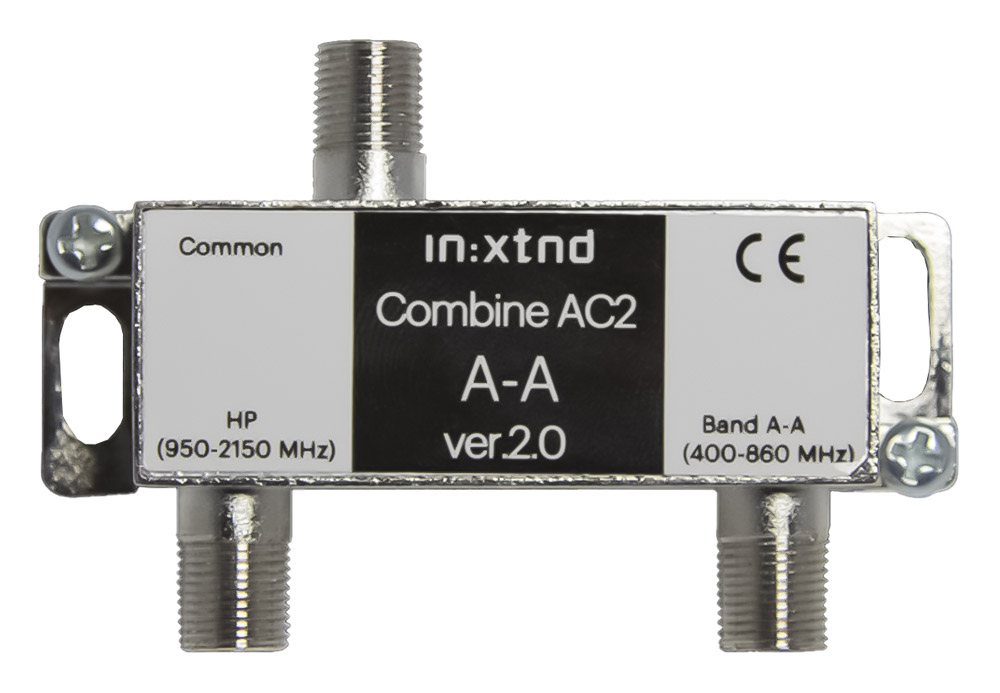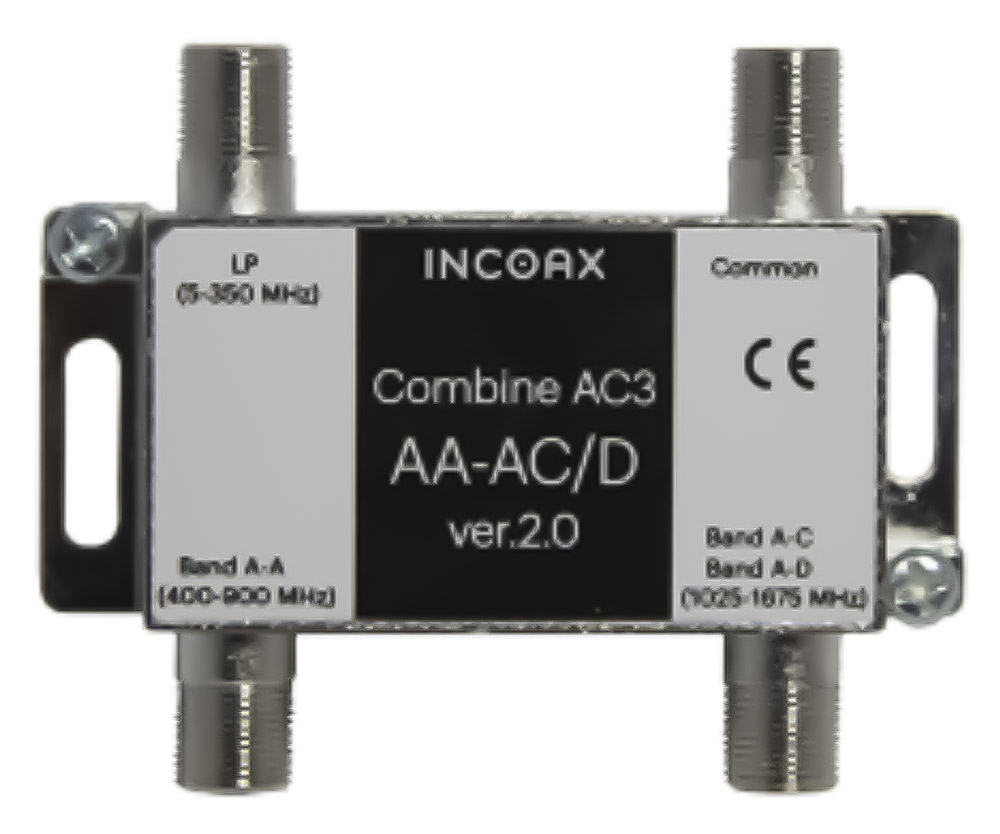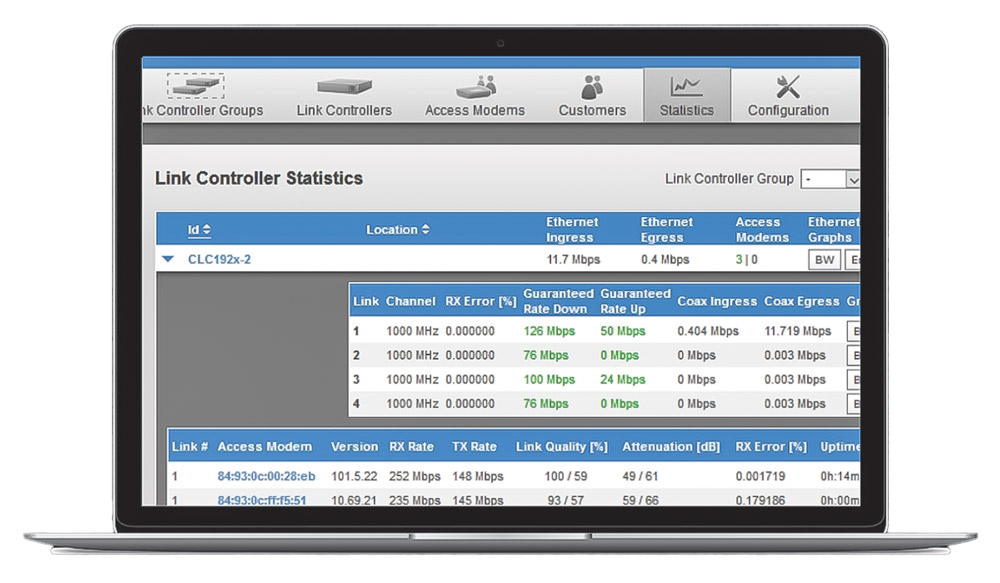InCoax Networks AB (publ) is innovating the future of broadband access. They provide the next generation of smart and sustainable networking products and solutions to the world’s leading telecom and broadband service providers. InCoax has its headquarter in Lund, Sweden, and a development & operations unit in Gävle, Sweden.
InCoax Networks AB is listed on NASDAQ First North Growth Market.
InCoax Networks is Reinventing Connectivity in existing property coaxial networks for high performance broadband access by solving the ‘Last Mile Challenge’ in Fiber-To-The Home (FTTH) deployments for Communication Service Providers (CSP) globally.
The technology is a future proof, reliable and cost-effective complement to fiber, that reduces installation time and improves take-up rate, to boost digital inclusion and Internet access for all.
Solving the last mile challenge
Fiber networks are being installed in streets at a rapid pace, but the cost and complexity of connecting buildings and apartments with high-speed, high-bandwidth services represents the Last Mile Challenge. Full fiber deployment is an expensive undertaking. Therefore, it makes sense to use the free capacity in existing coaxial networks to reach MultiGigabit speeds without the need to install fiber in the buildings or apartments. InCoax provides solutions for customers to reach internet speeds of up to 3.2 Gbps in a smart and cost-efficient way.
How It Works
InCoax Control Unit or DPU is connected to the street fiber and the existing inbuilding coaxial network at the extension point (FTTep)
InCoax’s MoCA Access™ technology uses free network capacity and can co-exist with existing TV-services
InCoax Access modems are connected to the coax outlets in the apartments
You now have high performance multigigabit speed broadband access to the internet, IPTV, VoIP and web-TV services
Fiber Extension
Installing fiber to every MDU living-unit is expensive in terms of labour costs, disruptive to customers, and often delayed due to slow process of getting permissions from building and living-unit owners or local authorities. Fiber Extension using MoCA Access™ based InCoax technology reduce the cost and complexity when deploying FTTH networks.
MoCA® can sustainably leverage existing coaxial cable infrastructure and reuse existing network operators’ assets, while still providing FTTH-like broadband connectivity.
FIBER-TO-THE EXTENSION POINT
FTTep enables next-generation access networks that deliver MultiGigabit broadband services, helping service providers to deploy broadband networks at a fraction of the cost of traditional FTTH deployments. It is especially important for areas where optical fiber cannot be deployed due to limitations on construction, lack of ducts, apartment or building accessibility, technical or historical preservations reasons.
The main objective of FTTep is to re-use coax infrastructure to extend fiber gigabit services with minimal construction work.
FTTep is typically deployed near the end-user either outside or inside the building depending of available coaxial infrastructure.
The InCoax DPU/Control Unit is located at the FTTep where it connects the fiber to the coax in-building network.
GPON / XGS-PON EXTENSION
XGS-PON is an updated PON standard that can support 10 Gbps symmetrical data transfer and is part of the GPON family of standards known as Gigabit-capable PON.
In MDU and MTU deployments the in-building fiber installations are challenging and Fiber Access Extension solve this intra building connectivity over coaxial networks. Cost of deploying fiber from entry point to each MDU unit can be up to 40% of the cost of deploying the Fiber-To-The Building.
The Broadband Forum Technical Report, TR-419 – Fiber Access Extension over existing coaxial Infrastructure, addresses MoCA Access™ technology to extend the fiber services. This is based on its existing TR-301 which defines functionality for a Distribution Point Unit (DPU).
InCoax MoCA Access 2.5 technology symmetrically communicates with 2.5 Gbps on each coax DPU/Controller RF channel (3.2 Gbps under favourable conditions). The coax outlet is usually located at the heart of the premises making internal wiring unnecessary.
ACTIVE ETHERNET EXTENSION
Active Ethernet is a Point-to-Point (P2P) technology that connects a Service Switch to Remote L2 Switch. In-building network is typically a Local Area Network (LAN) which requires cabling from Remote L2 Switch to each apartment entry point, RJ-45 Ethernet outlet.
Re-using copper phone lines is an alternative but is very much depending on the lines performance speed which vary from as low as 100Mbps up to close 1Gbps testified by several operators.
The Broadband Forum Technical Report, TR-419 – Fiber Access Extension over existing coaxial Infrastructure, addresses MoCA Access™ technology to extend the fiber services. This is based on its existing TR-301 which defines functionality for a Distribution Point Unit (DPU).
InCoax MoCA Access 2.5 technology symmetrically communicates with 2.5 Gbps on each coax DPU/Controller RF channel (3.2 Gbps under favourable conditions). The coax outlet is usually located at the heart of the premises making internal wiring unnecessary.
Deployment
InCoax’s Fiber Access Extension technology solves the ‘Last Mile Challenge’ of providing MultiGigabit broadband services to Multi-Dwelling Units (MDUs). It increases property reach and subsequently grows the addressable market size for operators. It uses the existing in-house coax cable infrastructure, positioning it as the cost and time-saving alternative to pulling new cables.
The MoCA Access™ 2.5 technology is a high performance, future proof, reliable and cost-effective complement to fiber, that reduces installation time and improves take-up rate, to boost digital inclusion and Internet access for all.
COMPONENTS FOR FIBER ACCESS EXTENSION USING MOCA ACCESS
Fiber Access Extension Over Coax
InCoax’s Fiber Access Extension technology solves the ‘Last Mile Challenge’ of providing Gigabit or MultiGigabit broadband services to Multi-Dwelling Units (MDUs).
It uses the existing in-house coax cable infrastructure, positioning it a high performance, future proof, reliable and cost-effective complement to fiber, that reduces installation time and improves take-up rate. Subsequently it increases property reach and grows the addressable market size for operators, to boost digital inclusion and Internet access for all.
The modems can be self-installed by tenants, saving time and money when installing and launching services. It can also be rolled-out in stages which shortens time to revenue, lowers initial CAPEX and contributes to faster overall Return on investment (ROI).
MoCA Access™ 2.5 standard
The MoCA Access 2.5 standard was created to solve the Last mile challenge. It is capable of 2.5 Gbps data speed using the existing in-building coaxial cabling.
MoCA Access is a point-to-point and point-to-multipoint system standard serving up to 31 modems (clients) per channel. It is designed to co-exist with legacy services such as cable- and satellite-TV, DOCSIS, and cellular (4G/5G) technologies.
The operating frequency range is 400 – 1675 MHz. It has low latency (delay less than 5ms) and is nearly symmetrical, throughput is up to 2.5 Gbps downstream and 2 Gbps upstream.
Range of Products for Multigigabit Broadband Access
InCoax Control Units and DPUs are used for fiber access and fixed wireless access (FWA) extension deployments in MDUs. They convert and extend the broadband communication to the InCoax Access (NTE) modems situated in the apartments. The technology is based on the MoCA Access™ 2.5 standard supporting up to 2.5 Gbps symmetrical data rates with low latency on each channel in point-to-point (P2P) or point-to-multipoint (P2MP) coaxial networks.
The InCoax technology has a powerful web-based interface for existing operator provisioning system integration through standard protocols such as NETCONF/YANG and SNMP. Zero Touch Provisioning (ZTP) integration with the InCoax Element Management System allows for fast deployment of systems and effective use of human resources that saves time and money.
MOCA ACCESS 2.5 CONTROL UNITS & DATA PROCESSING UNITS (DPU)
Products
InCoax D2501 DPU
Fiber access extension for small MDUs in P2MP coaxial networks
MoCA Access™ 2.5 DPU for fiber access extension deployments in small MDUs using the existing in-building coaxial networks for Internet communication. Supports up 2.5 Gbps symmetrical data rates with low latency to maximum 16 InCoax Access (NTE) modems in a shared point-to-multipoint network. D2501 supports several up-link options as XGS-PON, GPON, Active Ethernet with 1 and 10 Gigabit Northbound link speed. IP67 enclosure with passive cooling for outdoor or indoor installation.
It is cost-effective and rapid to deploy. It can co-exist with legacy TV services and DOCSiS 3.0 for faster transformation and increased take-up rate.
D2501 is a robust and reliable FTTep (Fiber-To-The-extension-point) network element that can be deployed in pedestals, on poles, in manholes, or within the building – anywhere there is broadband (fiber/FWA) and the in-building coaxial network access. It is powered locally or remotely by an InCoax Power Inserter/Extractor connected to the network.
in:xtnd Control C251 & C254
Fiber access extension for MDUs in P2P & P2MP coaxial networks
MoCA Access™ 2.5 DPU for fiber access extension deployments in MDUs using the existing in-building coaxial networks for Internet communication. Supports up 2.5 Gbps symmetrical data rates with low latency to maximum 31 InCoax Access (NTE) modems per channel in a shared point-to-multipoint network (up to 124 apartments on the 4-channel version). The enclosure is designed for passive cooling for indoor installation.
in:xtnd Control is cost-effective and rapid to deploy. It can co-exist with legacy TV services and DOCSiS 3.0 for faster transformation and increased take-up rate. It is a series of robust and reliable FTTep (Fiber-To-The-extension-point) network elements that can be deployed anywhere there is broadband (fiber/FWA) and the in-building coaxial network access.
INCOAX ACCESS MODEMS
InCoax Access Modems is a series of MoCA Access™ 2.5 network termination equipment (NTE) used for fiber access and fixed wireless access (FWA) extension deployments in MDUs. They connect to any antenna outlet in the subscriber’s home for easy self-installation, supporting up to 1 or 2.5 Gbps symmetrical data rates with low latency on the LAN port in a point-to-point (P2P) or point-to-multipoint (P2MP) coaxial network.
The passive diplexer pass-through supports existing legacy TV standards. Zero Touch Provisioning (ZTP) functionality makes it easy, fast, and cost-effective to deploy new customer modems. Digital devices such as computer, IP TV box, switch or router are connected to the LAN port.
InCoax Access A101
in:xtnd Access MA2.5
MoCA Access™ modems with 1 Gbps capability
InCoax Access A101 is a series of reliable coax Network Termination Equipment (NTE) modems capable of 1Gbps broadband communication on one LAN port. Compatible with previous modem model versions. Multiple versions to support all MoCA bands.
in:xtnd Access MA2.5 is a reliable coax Network Termination Equipment (NTE) modem capable of 1Gbps broadband communication on each of the two LAN ports. Single version that can be programmed to support all MoCA bands.
Key features
- Supports symmetrical Gigabit data rates
- Can co-exists with TV or Satellite services
- Connects to antenna outlet
- Remotely configurable
- Easy self-installation by subscriber
- Bracket included for easy wall mount (A101)
- No software installation on the end-users
computer
in:xtnd™ Combine
High performance frequency combiners
Combine is a family of high performance di- and triplexer filters. The in:xtnd Combine is designed to be used for connecting one or two MoCA Access channels from an in:xtnd™ Control and FM/VHF into a single coaxial cable. This enables TV and gigabit broadband traffic to run through the same coax cable.
in:xtnd™ Manage
Provisioning and Control System
The in:xtnd Manage is an advanced cloud based element manager with features for in:xtnd Control deployment, service-based in:xtnd Access deployment, control and supervision of the coax link conditions. In:xtnd Manage includes essential functions for service provisioning and network management.
TELONIX stands behind every product sold, with unmatched technical support.


